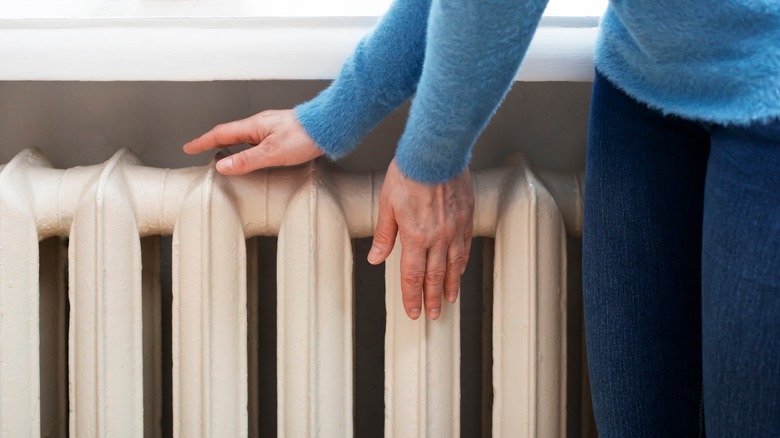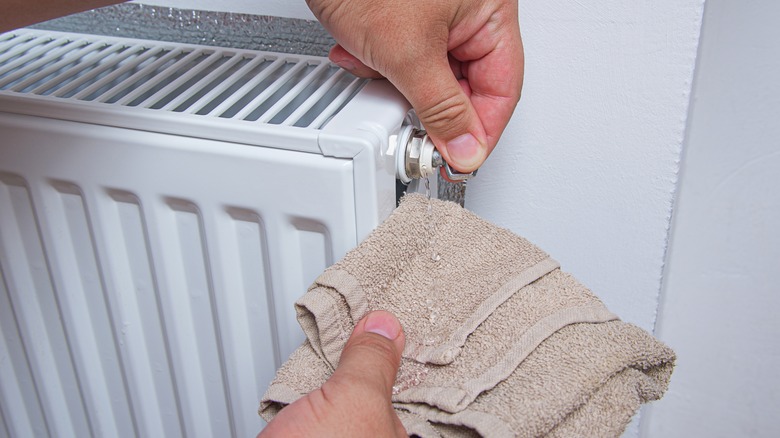Top Reasons You Should Be Bleeding Your Radiator (& How To Do It)
Long before the advent of central air, people relied on radiators to keep their homes cozy and warm in the winter. They continue to be a staple in many parts of the U.S. today. But they certainly come with their quirks, including occasional strange noises. In some cases, the solution to the noise is simple: you need to bleed your radiator.
Bleeding your radiator is when you allow the excess air in the system to escape. It's important because air rises to the top and stays there, preventing hot water from circulating through the radiator. That results in a less efficient heating system, a colder space, and uneven temperatures. It also puts more strain on the boiler and can eventually lead to low water pressure, a lack of hot water, and water leaks. Bleeding your radiator doesn't take long, and it's a simple way to reduce your energy costs, keep your boiler in good condition, and make the most of your radiator. If the top of your radiator feels cold when the bottom is hot, makes noises when it comes on, or some radiators are heating up more than others, it's likely time to bleed your radiator. Low boiler pressure is also a sign that there's excess air in the system. At minimum, you should bleed your radiator once a year, or whenever it's been a long time since you've used it.
Bleeding a radiator step-by-step
To bleed your radiator, you'll need a radiator key, which you can find at any hardware store. Some radiators can also be bled with a flat screwdriver or wrench. You'll also need an old cloth and a bucket or container to catch water. If you have multiple radiators, start with the one that is farthest from the boiler. Before you start, turn off the heat and let the radiator fully cool down to avoid scalding yourself.
Then find the bleed valve. It's typically a stem on the upper side of the radiator. Some are square-shaped and others have screws. Insert the key (or other tool) into the valve and turn it counterclockwise to open the valve and release the air. You'll hear a hissing sound as air escapes. Place the bucket under the valve and grab your cloth — after all the air is released, water will follow. (If the water has a kerosene-like smell, that's normal and not a cause for concern.) Turn the key the opposite way to close the valve. Repeat the process for the other radiators if needed, then turn the heat back on and see if things have improved. Check the boiler pressure as well. If the radiator still isn't heating properly or the boiler pressure is too high or low, you may need to re-pressurize the boiler, replace the boiler, or repair the radiator with the help of a heating professional.

